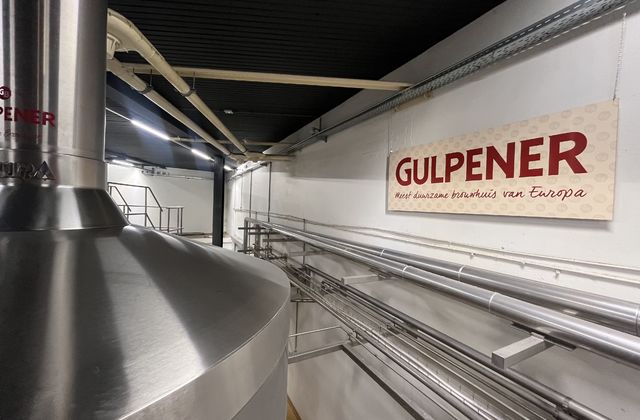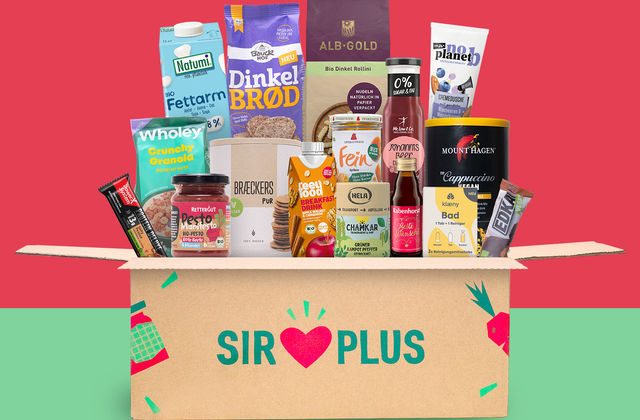What is it? A new innovative packaging solution made from seaweed that mimics traditional plastic packaging. The Notpla packaging dissolves into the environment naturally at the end of life (Notpla, 2022b).
Why is this important? Humanity has produced 8.3 billion metric tons of plastic since the 1950s, half of which has been produced in the last 15 years alone (NRDC, 2022). Worldwide 300 million tons of plastic are produced each year, half of which are single-use items (NRDC, 2022). Further, most bioplastic that is labelled as “compostable” today requires specific industrial conditions to break down, and many of these items end up in the landfill or the oceans after a single-use (Nandakumar et al., 2021). By providing a durable alternative to single-use plastic packaging, Notpla provides a way to reduce the high amounts of plastic waste that gets landfilled. Further, the raw materials that Notpla uses are seaweed, which is a regenerative naturally occurring, low-resource intensive material that is easily available (Notpla, 2022c). Notpla’s target markets are events which tend to create high levels of single-use plastic packaging waste, like marathons, music festivals and take-out food.
Main resource strategy: Narrowing the loop by reducing the total amount of single-use plastic packaging produced for food and beverage consumption.
Other resource strategy: Regenerating the loop by creating single-use packaging that can dissolve within the natural environment at the end of life.
Business model aspects:
- Value Proposition: Notpla provides a packaging solution for food and beverages that is made from seaweed. The packaging behaves like single-use plastic, but is completely naturally biodegradable in 4-6 weeks, and is home compostable (Notpla, 2022c).
- Value Creation & Delivery: Notpla’s promise is to “make packaging disappear”. The company makes its packaging product from seaweed that tends to grow by 1m per day, making a regenerative raw material source (Notpla, 2022c). Notpla claims that its brand of bioplastic from seaweed doesn’t compete with food crops, doesn’t need fresh water, and actively contributes to de-acidifying the oceans (Notpla, 2022c).
- Value Capture: The seaweed packaging looks and behaves almost exactly like plastic without the downsides of the pollution at the end of life, and so has many applications across multiple industries. This can make it a good alternative for food and beverage manufacturers that are trying to cut down on their waste and emissions.
Business model experimentation practices: Notpla has been testing the viability of its business idea through small pilots since 2014 (Notpla, 2022a). Most notably it handed out 30,000 of its ‘Ooho’ water pouches to runners at the London marathon in 2019 and caught global attention (Nace, 2019). They have now slowly expanded to more domains such as ketchup packets, (not)plastic film cocktail shots at music festivals, and providing a grease-proof and water-resistant lining to take-out food packaging (Notpla, 2022b).
Tools, methods and approaches used: The startup partners with larger established brands such as, Tropicana, Heinz, Lucozade Sport, The Glenlivet, and the UK’s Just Eat take-out company, to trial its products (Notpla, 2022b). This has a two-fold benefit of providing a good platform for pilot-testing, and adding visibility to the brand to gauge consumer acceptance (Notpla, 2021). As of 2021, Notpla claims to have recorded 300 million social impressions from consumers through its social media campaigns (Notpla, 2022a).
Sustainability outcomes: Notpla claims that its product can 100% biodegrade naturally in 4-6 weeks, is home and industrially compostable, and micro-plastic free (Notpla, 2021). The startup is in the early stages of scaling up, but so far with its partnership with JustEat, UK, Notpla claims to have replaced 46,000 single-use plastic sauce sachets in takeaway food (Notpla, 2021). The company aims to replace 25 million takeaway boxes in the UK by 2025, and subsequently avoid 465 tonnes of plastic waste (Notpla, 2021).
Sources:
Nace, T. (2019). London marathon runners were handed seaweed ouches instead of plastic bottles. Forbes. Accessed 31 August 2022 at: https://www.forbes.com/sites/trevornace/2019/04/29/london-marathon-runners-were-handed-seaweed-pouches-instead-of-plastic-bottles/
Nandakumar, A., Chuah, J., Sudesh, K. (2021). Bioplastics: A boon or bane? Renewable and Sustainable Energy Reviews. 147. DOI: https://doi.org/10.1016/j.rser.2021.111237
Notpla. (2021). Impact Report 2021. Accessed 31 August 2022 at: https://www.notpla.com/wp-content/uploads/2021/12/NOTPLA-Impact-Report-2021-3.pdf
Notpla. (2022a). About Us. Accessed 31 August 2022 at: https://www.notpla.com/about/
Notpla. (2022b). Products. Accessed 31 August 2022 at: https://www.notpla.com/products-2/
Notpla. (2022c). Technology. Accessed 31 August 2022 at: https://www.notpla.com/technology-2/
NRDC (Natural Resources Defense Council) (2022). Single-Use Plastics 101. Accessed 29 August 2022 at: https://www.nrdc.org/stories/single-use-plastics-101
***
About project Circular X
Project Circular X is about ‘Experimentation with Circular Service Business Models’. It is an ambitious research project funded by the European Research Council (ERC) which supports top researchers from anywhere in the world. Project CIRCULAR X runs from 2020-2025. The project is led by Principal Investigator (PI) Prof Dr Nancy Bocken, who is joined by a multidisciplinary team of researchers at Maastricht Sustainability Institute (MSI), Maastricht School of Business and Economics, Maastricht University. The project cooperates with businesses who want to innovate towards the circular economy.
Project Circular X addresses a new and urgent issue: experimentation with circular service business models (CSBMs). Examples of such new business models include companies shifting from selling products to selling services and introducing lifelong warrantees to extend product lifetimes. However, CSBMs are far from mainstream and research focused on experimentation is little understood. The research aims to conduct interdisciplinary research with 4 objectives:
- Advancing understanding of CSBMs; their emergence and impacts
- Advancing knowledge on CSBM experimentation
- Developing CSBM experimentation tools
- Designing and deploying CSBM experimentation labs
Funding source
This project has received funding from the European Research Council (ERC) under the European Union’s Horizon 2020 research and innovation programme, grant agreement No. 850159.
Using this information
When you refer to this case, please use the following source:
Circular X. (2022) Case study: Notpla – Regenerative packaging alternative. Accessed from www.circularx.eu



